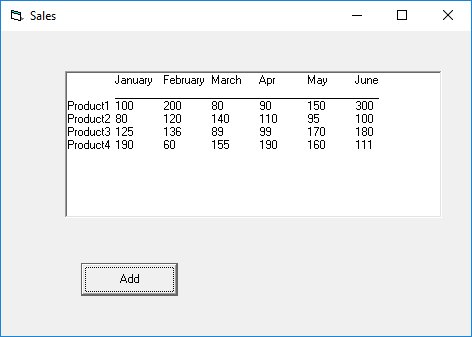Lesson 17: Creating Files in Visual Basic 6
Master file handling in VB6 to create, write, and read persistent data
Key Takeaway
VB6 file handling allows you to create, write, and read files for persistent data storage beyond the runtime of your application.
Welcome to Lesson 17 of our Visual Basic 6 Tutorial! In this lesson, you'll learn how to work with files in VB6, enabling you to create persistent data storage solutions. Unlike previous lessons where data vanished when the program ended, file handling allows you to save information to disk and retrieve it later.
17.1 Introduction to File Handling
Up until Lesson 16, our focus has been on creating programs that accept data at runtime, with the drawback that the data vanishes once the program ends. However, in this lesson, we will delve into a valuable skill: learning how to create and store files. By utilizing a customized VB program, we'll be able to write these files to a storage device and subsequently retrieve their contents through reading operations.
Runtime Data
- Data stored in memory
- Vanishes when program ends
- Limited to program execution
- Cannot be shared between sessions
File Storage
- Data saved to disk
- Persists after program ends
- Can be shared between programs
- Supports large datasets
17.2 Creating Files
To create a file in VB6, we use the following command:
File Creation Syntax
Each file created must have a file name and a file number for identification. For the file name, you must also specify the path where the file will reside.
' Create a text file in My Documents folder Open "c:\My Documents\sample.txt" For Output As #1 ' Create an HTML file in the same location Open "c:\My Documents\sample.html" For Output As #2
17.2.1 Sample Program: Creating a Text File
This program creates a text file, prompts the user for input, and writes that input to the file.
Private Sub create_Click() Dim intMsg As String Dim StudentName As String ' Open file for writing Open "c:\My Documents\sample.txt" For Output As #1 intMsg = MsgBox("File sample.txt opened") ' Get student name StudentName = InputBox("Enter the student Name") ' Write to file Print #1, StudentName intMsg = MsgBox("Writing " & StudentName & " to sample.txt") ' Close file Close #1 intMsg = MsgBox("File sample.txt closed") End Sub
File Content Preview
sample.txt contents will appear here after creation
17.3 Reading Files
To read a file created in section 17.2, you can use the input # statement. However, we can only read the file according to the format when it was written. You have to open the file according to its file number and the variable that holds the data. We also need to declare the variable using the DIM command.
17.3.1 Sample Program: Reading a File
This program reads the contents of a text file and displays it in a textbox.
Private Sub Reading_Click() Dim variable1 As String ' Open file for reading Open "c:\My Documents\sample.txt" For Input As #1 ' Read file content Input #1, variable1 ' Display in textbox Text1.Text = variable1 ' Close file Close #1 End Sub
File Reading Output:
17.3.2 Sample Program: Using Common Dialog Box
This example uses the common dialog box to create and read text files, which is more user-friendly than specifying paths directly.
Dim linetext As String Private Sub open_Click() ' Set filter for text files CommonDialog1.Filter = "Text files (*.txt)|*.txt" CommonDialog1.ShowOpen If CommonDialog1.FileName <> "" Then Open CommonDialog1.FileName For Input As #1 ' Read file until end Do Input #1, linetext Text1.Text = Text1.Text & linetext Loop Until EOF(1) End If Close #1 End Sub Private Sub save_Click() ' Set filter for text files CommonDialog1.Filter = "Text files (*.txt)|*.txt" CommonDialog1.ShowSave If CommonDialog1.FileName <> "" Then Open CommonDialog1.FileName For Output As #1 Print #1, Text1.Text Close #1 End If End Sub

Lesson Summary
In this lesson, you've mastered VB6 file handling techniques:
File Creation
Using the Open...For Output command to create files
Writing Files
Using Print # to write data to text files
Reading Files
Using Open...For Input and Input # to read file contents
Common Dialog
Using the CommonDialog control for user-friendly file operations
Best Practice
Always close files after you finish working with them using the Close statement. This ensures that all data is properly written to disk and releases system resources.
Practice Exercises
Test your understanding of VB6 file handling with these exercises:
Exercise 1: Student Records
Create a program that saves student names to a text file and allows users to retrieve them later.
Exercise 2: Configuration Saver
Develop an application that saves user preferences to a configuration file and loads them on startup.
Exercise 3: CSV Generator
Create a program that writes comma-separated values to a CSV file that can be opened in Excel.
Exercise 4: Log File Creator
Build an application that appends timestamped log entries to a text file each time an action is performed.
Exercise 5: File Encryption
Create a program that writes encrypted text to a file and can decrypt it when reading back.
Next Lesson
Continue your VB6 journey with Lesson 18: Creating Graphics in VB6.
Related Resources

Visual Basic 6 Made Easy
The ultimate beginner-friendly guide for mastering Windows-based application development using Visual Basic 6. Used as a textbook by universities worldwide.
What You'll Learn:
- Comprehensive coverage of VB6 coding techniques
- Event-driven programming best practices
- Practical examples and projects
- Debugging and error handling
- Database integration
- Advanced UI development

Visual Basic 2022 Made Easy
The ultimate guide to VB.NET programming in Visual Studio 2022. Master modern VB development with this comprehensive resource.
What You'll Learn:
- Modern VB.NET coding techniques
- Visual Studio 2022 features
- Advanced UI development
- Database programming with ADO.NET
- Web API integration
- Deployment strategies